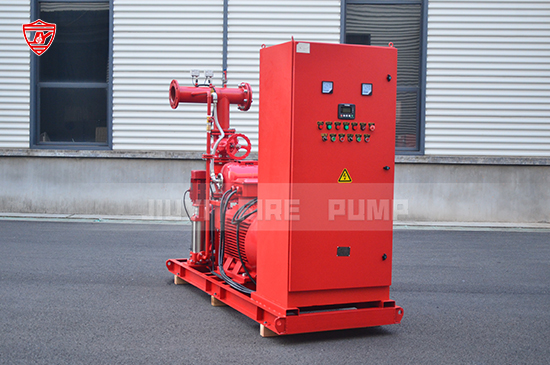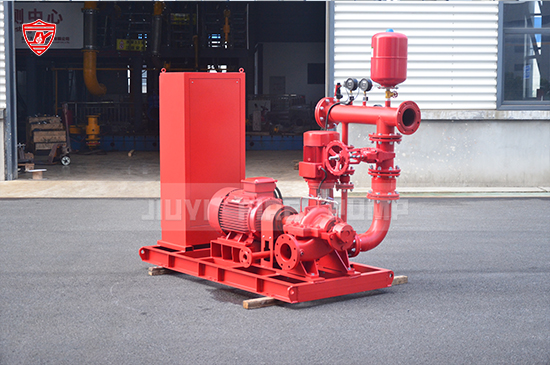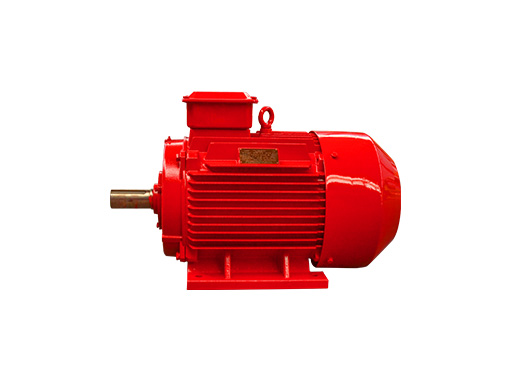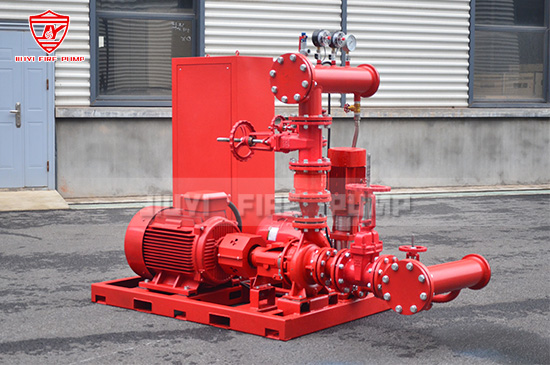In fire protection systems, uninterrupted performance is critical. Whether in a commercial building, industrial site, or high-rise development, fire pumps play a crucial role in delivering the necessary water pressure for firefighting. But what happens when a fire pump needs maintenance?
Taking a fire pump offline without a contingency plan poses significant risks. To address this, engineers, building owners, and facility managers must design and operate systems that maintain continuous fire pump operation—even during scheduled maintenance or unexpected failures.
This article explores practical strategies to ensure ongoing protection by using backup systems, redundancy design, NFPA 20 compliance, and real-world best practices.

Why Continuous Fire Pump Operation Matters
Fire incidents are unpredictable. A fire protection system must be ready 24/7, regardless of maintenance schedules. Failing to provide water pressure during downtime can:
-
Violate local fire codes and NFPA 20 regulations
-
Jeopardize life safety and property
-
Invalidate insurance coverage
-
Result in costly operational shutdowns
To avoid these outcomes, maintaining continuous fire pump operation during maintenance becomes a priority.
NFPA 20 Requirements for Fire Pump Redundancy
The National Fire Protection Association (NFPA) provides guidelines for fire pump reliability in NFPA 20: Standard for the Installation of Stationary Pumps for Fire Protection. While NFPA 20 doesn’t explicitly require redundant pumps in all cases, it does encourage backup systems in high-risk or mission-critical installations.
According to NFPA 20:
-
Multiple pumps may be required when the failure of a single pump would result in loss of fire protection.
-
Separate power sources should be considered, such as a combination of electric and diesel fire pumps.
-
Jockey pumps are not a substitute for fire pumps, but help maintain system pressure and reduce frequent start-ups.
Strategies for Continuous Operation During Maintenance
Let’s explore the most effective solutions to ensure uninterrupted fire protection during maintenance or pump failure.
1. Install a Redundant Fire Pump
The most reliable method is to install a redundant (standby) fire pump that can take over when the primary pump is offline.
Options:
-
Twin electric fire pumps
-
One electric + one diesel engine pump
-
Vertical turbine pumps in parallel
Ensure that each pump meets the required flow rate and pressure, as per system demand.
Benefits:
-
Seamless switching without downtime
-
Automatic start via pressure sensing or control panel logic
-
Redundancy against electrical failure or engine failure
2. Use a Loop Configuration
In large facilities, a looped fire protection system allows maintenance of one section without disrupting the entire network.
For example:
-
Segment valves can isolate pump rooms
-
Water loops maintain pressure from other pump sets
-
Valves are tagged and controlled to avoid accidental shutdown
3. Deploy Temporary Mobile Fire Pumps
In situations where built-in redundancy isn't feasible, consider mobile or skid-mounted fire pumps during maintenance.
These units are:
-
Diesel-powered for off-grid operation
-
Fast to deploy and connect to existing piping
-
Useful for short-term maintenance windows
Note: Ensure the temporary system complies with NFPA 25 for testing and maintenance.
4. Smart Control Systems with Auto Transfer Logic
Modern fire pump controllers can be programmed to:
-
Detect pump failure
-
Automatically start a secondary unit
-
Alert facility teams via alarms or remote notification
If your fire pump system lacks automation, it increases the risk of human error or delays in starting a standby unit.
5. Scheduled Maintenance with Risk Mitigation
Proper planning can reduce fire protection risks during pump service.
Best practices:
-
Perform maintenance during low-risk hours (e.g., nights or weekends)
-
Notify local fire departments in advance
-
Temporarily increase fire watch personnel
-
Use interim suppression systems like fire extinguishers or pre-charged risers
Pro tip: Always document downtime and backup procedures for compliance and auditing.
6. Isolated Zones and Pressure Reducing Valves
Designing zones in your building with dedicated risers and pressure reducing valves (PRVs) can limit the impact of pump maintenance.
-
Zones can be temporarily pressurized by auxiliary sources
-
PRVs prevent overpressure when switching between pumps
-
Effective for high-rise and hospital applications
7. Cross-Connected Pump Rooms in Campus Settings
For facilities like airports, universities, or large industrial parks, cross-connecting pump rooms ensures backup coverage.
-
Pipe networks link multiple buildings
-
If one pump fails, another location can compensate
-
Requires careful pressure management and valve control
8. Jockey Pump Role During Brief Interruptions
Jockey pumps maintain pressure and prevent pump cycling. During brief inspections or transitions, they can temporarily hold the line—but only if demand is low.
They are not fire pumps, and their use as a stopgap must be closely monitored.
9. Periodic Testing and Training
To ensure all of the above systems work in real-life scenarios:
-
Conduct weekly and monthly pump testing
-
Simulate fire pump failures and observe auto-start transitions
-
Train your fire protection staff in emergency operation protocols
A well-maintained fire pump system is only as reliable as its operators.
Real-World Example: Redundancy in High-Rise Building
A high-rise office tower in Singapore experienced a main fire pump failure during a quarterly maintenance cycle. Thanks to its backup diesel fire pump, the building remained fully protected. The system’s auto-transfer switch started the backup within 7 seconds, and the event was logged without incident.
Key takeaways:
-
Redundant design saved downtime
-
The fire pump system was compliant with both NFPA 20 and local codes
-
Insurance remained valid due to documented backup protocols

Conclusion
Fire pump maintenance is essential—but it doesn’t have to mean vulnerability. By designing systems with redundancy, automation, and strategic planning, you can ensure continuous fire pump operation, protecting both people and property.
At Better Technology Group, we manufacture UL-listed and NFPA-compliant fire pump sets including:
-
Electric fire pumps
-
Diesel engine fire pumps
-
Jockey pumps
-
Mobile pump systems
-
Custom pump package sets
Our experts can help you build reliable, always-on fire protection systems, even in the most demanding environments.



